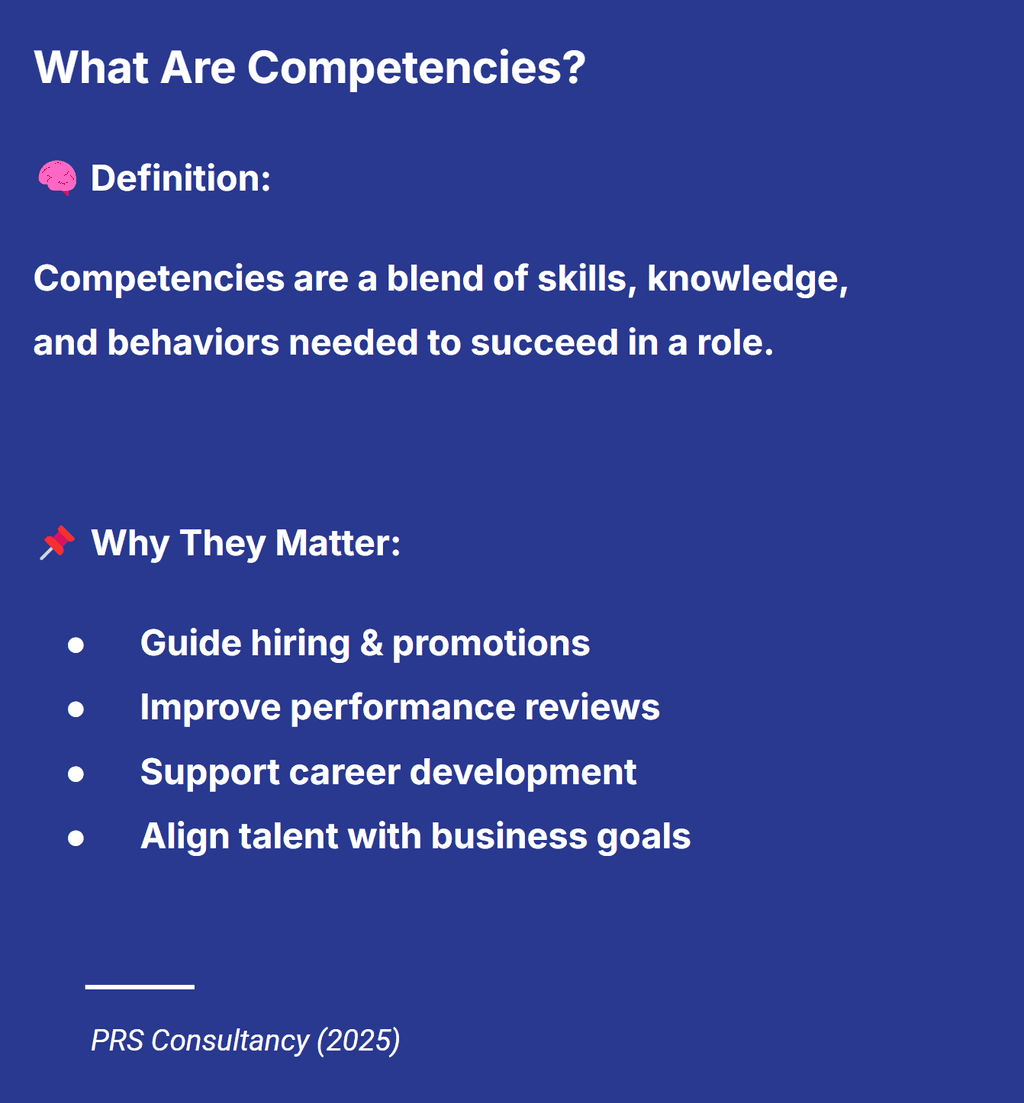Understanding competencies has become essential for organizations seeking to develop their talent and maintain a competitive edge. But what exactly are competencies, and why do they matter so much in professional settings? Drawing from extensive research and industry experience, this comprehensive guide breaks down everything you need to know about competencies and their critical role in workplace success.
What Are Competencies?
Competencies are observable and measurable combinations of knowledge, skills, behaviors, attitudes, and experiences that are essential for success in a particular role. They can be understood through a simple yet powerful formula:
Skills + Knowledge + Abilities = Competencies
As noted by PeopleBox, competencies differ significantly from skills. While skills are directly related to specific tasks and are primarily knowledge-based, competencies represent a broader integration of skills and personal traits that reflect your demonstrated capabilities. In practical terms, competencies translate into observable behaviors that showcase your ability to perform job requirements successfully, according to HRSG.

The Three Major Types of Competencies
Organizations typically categorize competencies into three distinct groups, each serving a specific purpose in talent development:
1. Core Competencies
Core competencies represent the fundamental strengths or strategic advantages unique to an organization that differentiate it from competitors. According to Laudah, these organization-wide capabilities form the foundation of company culture and performance expectations. Examples include:
- Problem-solving
- Integrity
- Leadership
- Innovation
- Customer focus
PeopleBox emphasizes that core competencies are essential for maintaining competitive advantage and should align with the organization's strategic objectives.
2. Functional Competencies
Functional competencies encompass the job or role-specific knowledge, skills, and abilities required to fulfill day-to-day responsibilities. These competencies vary significantly across different positions and departments. As outlined by Laudah, examples include:
- Data analysis
- Client service
- Financial planning
- Project management
- Technical expertise in specific tools or systems
Functional competencies directly impact job performance and are often the primary focus of technical training programs.
3. Behavioral Competencies
Behavioral competencies reflect the knowledge, skills, abilities, and traits that determine how successful someone will be at a job beyond technical capabilities. The Together Platform notes that these competencies focus on interpersonal dynamics and personal effectiveness. Common examples include:
- Adaptability
- Stress management
- Initiative
- Emotional intelligence
- Conflict resolution
Behavioral competencies are increasingly recognized as critical differentiators between average and exceptional performance across all organizational levels.

Top Competencies in Professional Settings
Research by High5Test identifies several universal competencies valued across industries and roles:
- Communication - The ability to convey information clearly and effectively in various contexts
- Leadership - Guiding and motivating others toward achieving goals
- Problem-solving - Identifying issues and implementing effective solutions
- Adaptability - Adjusting effectively to changing conditions
- Decision-making - Making timely and effective choices based on available information
- Teamwork - Collaborating productively with others toward common objectives
- Integrity - Adhering to ethical principles consistently
- Analytical thinking - Processing complex information systematically
- Time management - Using time efficiently to accomplish tasks
- Responsibility - Taking ownership of actions and outcomes
Organizations like StaffCircle recommend focusing on these key competencies in development programs to maximize workforce effectiveness.
Competency Models and Frameworks
Competency models transform abstract concepts into concrete expectations by explaining what each competency looks like in practice across different roles and organizational levels. According to PeopleBox, a comprehensive competency framework typically includes:
- Key competencies identified for each role
- Proficiency levels (e.g., Basic, Proficient, Expert)
- Behavioral indicators that describe specific actions demonstrating the competency
Importantly, the same competency may have different behavioral expectations depending on the role. For example, communication for a customer support role might involve active listening and asking clarifying questions, while for an executive it would include strategic communication and influencing stakeholders.
Degreed notes that well-designed competency frameworks provide a shared language across the organization and clear pathways for professional growth.
Competencies vs. Skills: Understanding the Difference
One common point of confusion is the distinction between competencies and skills. HRSG provides this helpful clarification:
- Skills are specific learned activities that you can perform with proficiency. They tend to be technical, job-specific, and can often be taught relatively quickly (e.g., operating specific software).
- Competencies are broader capabilities that combine skills, knowledge, and behavioral attributes. They develop over time through experience and continuous learning.
As Cambridge Assessment explains, competence represents "the ability to apply knowledge, understanding, and skills in performing to the standards required in employment." This holistic view emphasizes application in real-world contexts rather than simply possessing knowledge or skills.
Developing Competencies in Organizations
Effective competency development requires intentional strategies and ongoing commitment. Based on research published in Nature and ERIC, successful approaches include:
- Assessment - Identifying current competency levels through various evaluation methods
- Gap analysis - Determining disparities between current and desired competency levels
- Development planning - Creating personalized learning pathways
- Experiential learning - Providing opportunities to apply competencies in real situations
- Coaching and feedback - Offering guidance and constructive input
- Continuous evaluation - Regularly measuring progress and adjusting approaches
Toggl emphasizes that competency development should be aligned with both individual career aspirations and organizational strategic objectives.
The Future of Competencies
As work continues to evolve, competency frameworks must adapt accordingly. Emerging research from PMC and Tandfonline points to several trends:
- Increased emphasis on digital competencies across all roles
- Greater focus on adaptive capabilities rather than static skill sets
- Integration of AI-related competencies into traditional frameworks
- More personalized and agile competency development approaches
- Enhanced measurement techniques for assessing competency acquisition
Organizations that proactively evolve their competency frameworks will be better positioned to develop talent capable of thriving in future work environments.
Conclusion
Competencies provide a powerful framework for understanding, developing, and measuring the capabilities essential for workplace success. By clearly defining expectations through well-structured competency models, organizations can more effectively recruit, develop, and retain talented individuals who drive organizational performance.
Whether you're an individual professional seeking to enhance your capabilities or an organizational leader implementing talent development strategies, a deep understanding of competencies offers a roadmap for navigating today's complex professional landscape. As Think Eleven aptly notes, "Competence isn't just about what you know—it's about how you apply that knowledge to consistently deliver results."
This comprehensive guide was developed based on extensive research from authoritative sources in talent development, organizational psychology, and education. For more detailed information on specific aspects of competencies, explore the referenced resources throughout this article.
